Design: Audio / Jutland
Back with a bang
Bang & Olufsen is sidestepping planned obsolescence and reviving some of its most attractive designs. We head to its factory to hear more.
Built-in obsolescence in technology products is an open secret. As companies include mechanisms designed to feel antiquated just in time for their next release, consumers are left to reckon with the issue – and pick up the tab. In 2023, the UN estimated that individuals produce about 8kg of electronics waste every year, equating to 61.3 million tonnes of discarded computers, phones, cables, batteries and televisions worldwide.
“If we continue to operate the industry in the same way, we’ll have a huge problem,” says Mads Kogsgaard Hansen, head of product circularity and portfolio planning at Bang & Olufsen (this portfolio stretches back almost a century to when the company was founded, in 1925). “We use too many materials for too short a lifespan, motivating consumers to replace their devices early without any concrete reasons. The consequence is the waste being generated and [we need to consider] how to handle the substance of the waste.”
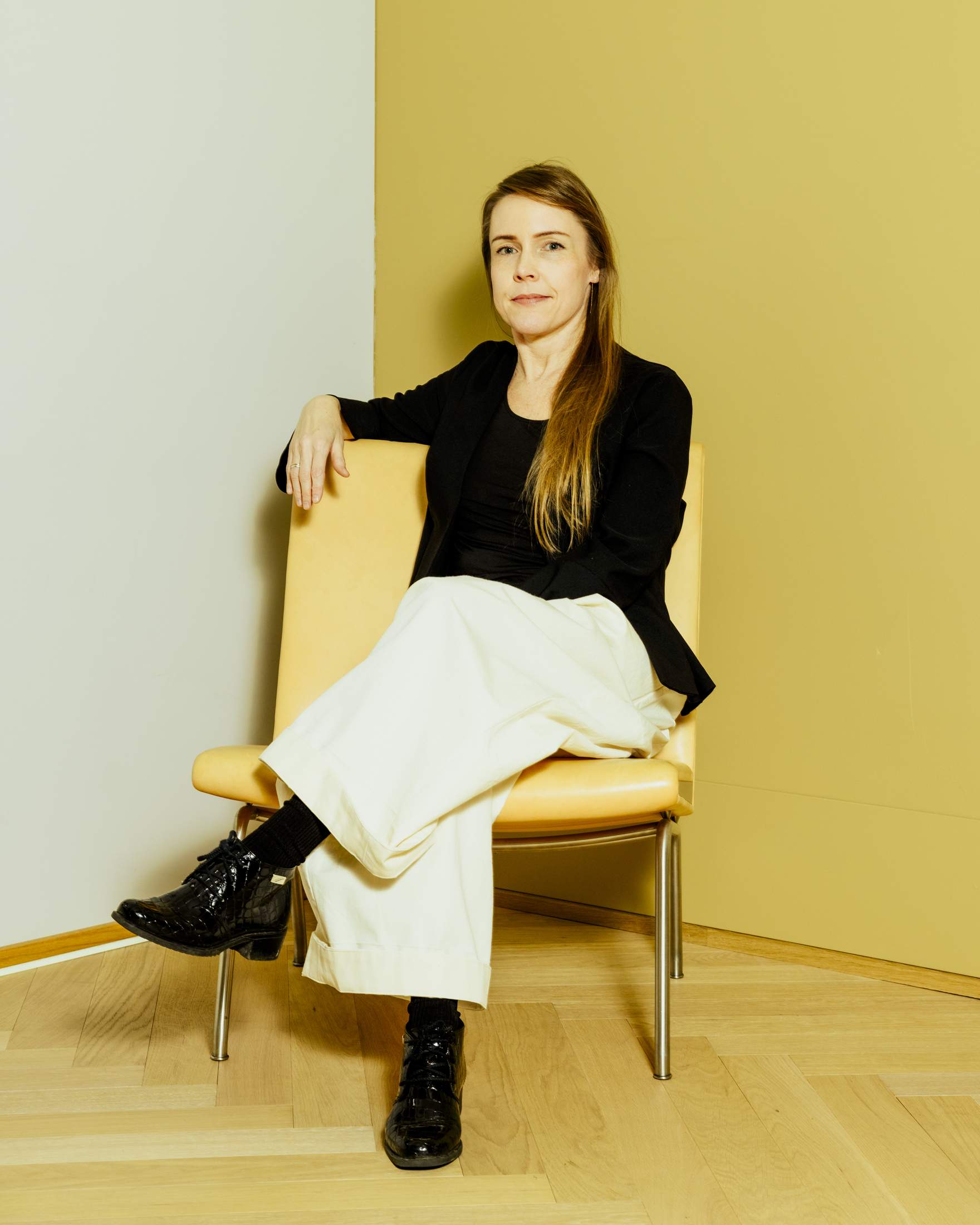


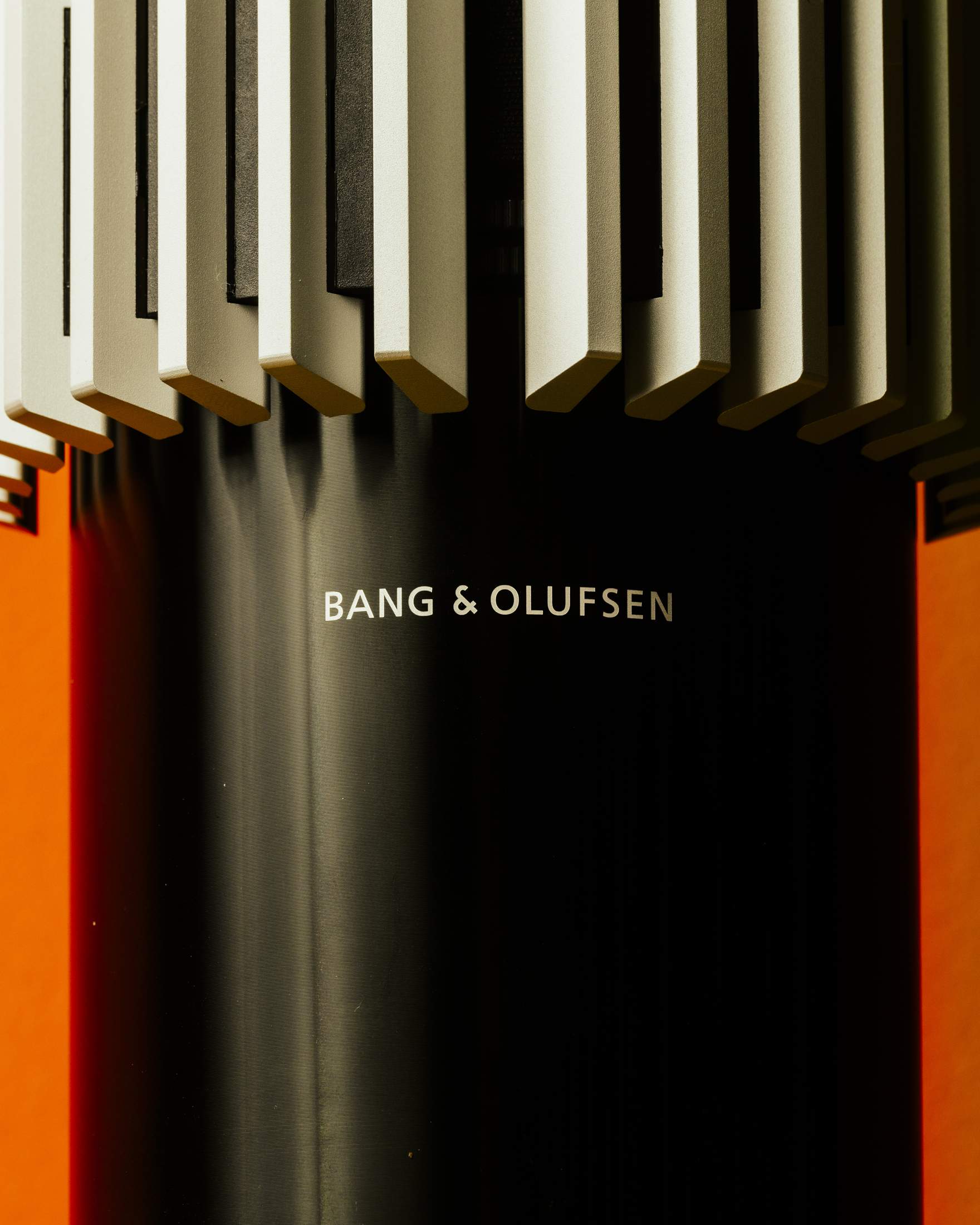
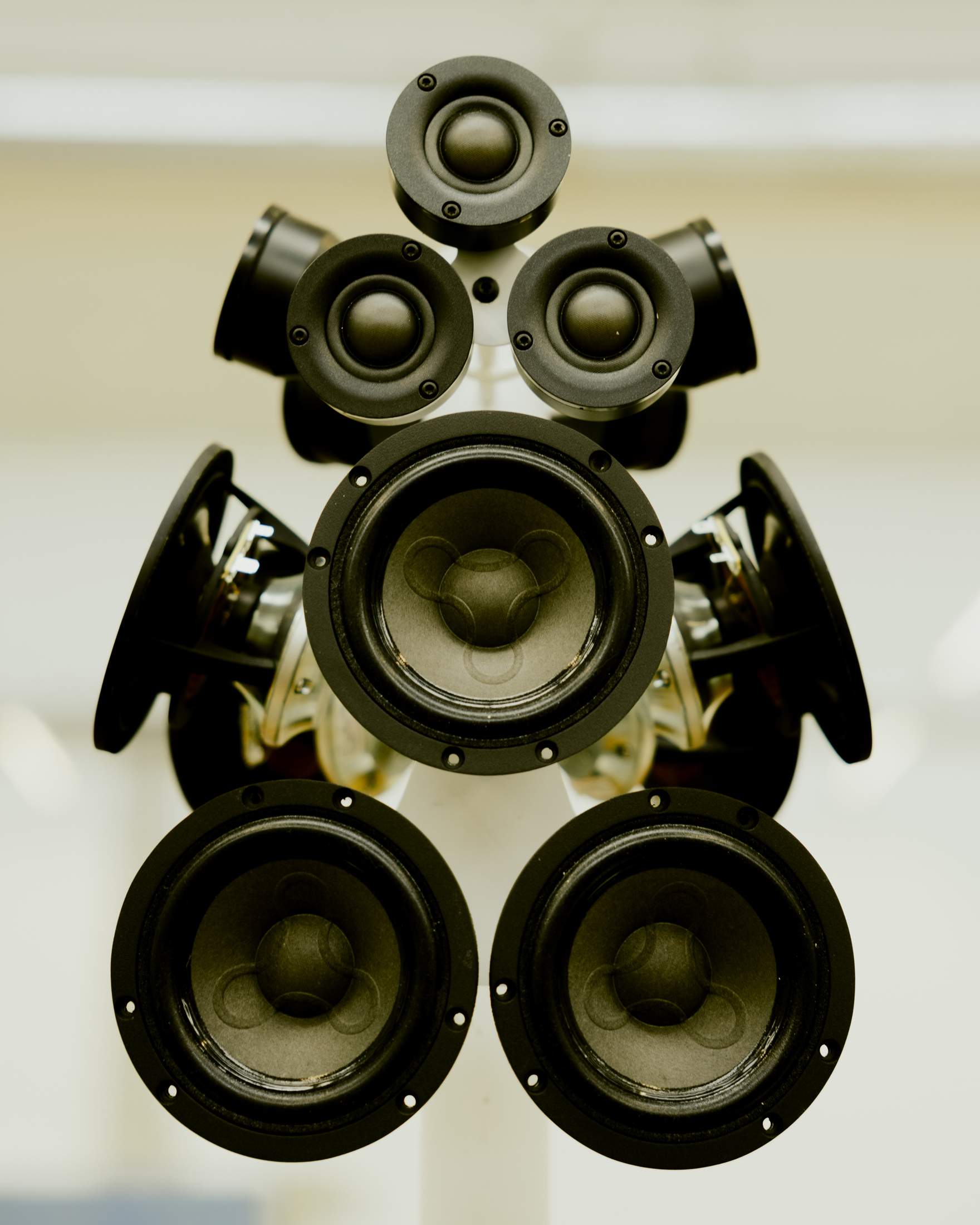
It’s a windy day in Struer, on the Danish peninsula of Jutland, and Kogsgaard Hansen is walking monocle through Bang & Olufsen’s Factory 3. Here, technicians are busy sourcing and taking apart Beosound 9000 CD players, originally designed by the late British industrial designer David Lewis in the 1990s. The Bang & Olufsen team have purchased the CD players from their previous owners to refurbish as part of Kogsgaard Hansen’s Recreated Classics Programme, a project that began in 2020 with the revisiting of the 4000c turntable from 1972; this year, it will release 200 refurbished Beosound 9000c CD players.
Considering Lewis’s futuristic-looking design, with its sleek aluminium-and-glass surfaces, it seems anachronistic to watch these devices being painstakingly taken apart, cleaned and fixed by hand. Across the factory floor, boxes brimming with metal parts are carefully organised and stacked. “The refurbished products coming out of the workshop are often better than the new ones because they’ve been reassessed with knowledge that we didn’t have when we first launched them,” adds Kogsgaard Hansen, as he explains that, for example, the laser reader is always replaced during the restoration process as it is the mechanism most likely to be faulty. “We need to make sure that we’re future-proofing as well, so we replace the parts that often have a reduced lifespan or might malfunction down the line. There is a long list of proactive fixes that we can make thanks to the experience that lies in the building and in our team.”
Erik Vennevold, manager of technical assembly, worked on the original Beosound 9000 in 1996 and has nearly 30 years of experience fixing them. “When we started making the Beosound 9000, it was said that the acceleration of the CD-grabbing mechanism was faster than a Ferrari,” he says, demonstrating how the CD player silently whizzes at speed between the six albums encased in glass. When the technology was first introduced, the idea of seamlessly gliding between different albums and genres was unheard of, a kind of prototype for a shuffle playlist before the age of digital streaming. Today, Vennevold is in charge of passing down his accrued technical know-how to a team of Bang & Olufsen engineers tasked with reassembling the CD players using original equipment from the 1990s that was brought up from storage especially for this project.
“Bang & Olufsen has always been challenging the status quo – no one thought that a CD player could look like anything but a black box”
After the manual disassembly in Factory 3, the aluminium parts are sent to the nearby Factory 5, where they can be milled, polished and painted black to look as good as new. Often the cabinets show scratches and marks on the panes. For aluminium, this is an easily rectifiable problem but the glass lids, in this instance, are being fitted from new materials so as not to compromise the overall quality of the design. Compared to the rather old-fashioned and analogue craft taking place in Factory 3, Factory 5 is where Japanese robotic arms engage in a hypnotic pas-de-deux to bend, polish, stretch, press, fold and mill aluminium into the recognisable Bang & Olufsen shapes. The sound of machinery whirring and clanging can be heard as metal is crushed and moulded into shapes of sound systems, speakers and TVs, at times with the help of a press that can exert the weight of 117 tonnes (the equivalent of about 30 Asian elephants). On one side of the cavernous space, rows of metal parts are being dipped into vats of bubbling liquid to achieve the all-important anodising step of manufacturing: the electro-chemical process that creates a scratch-resistant surface.
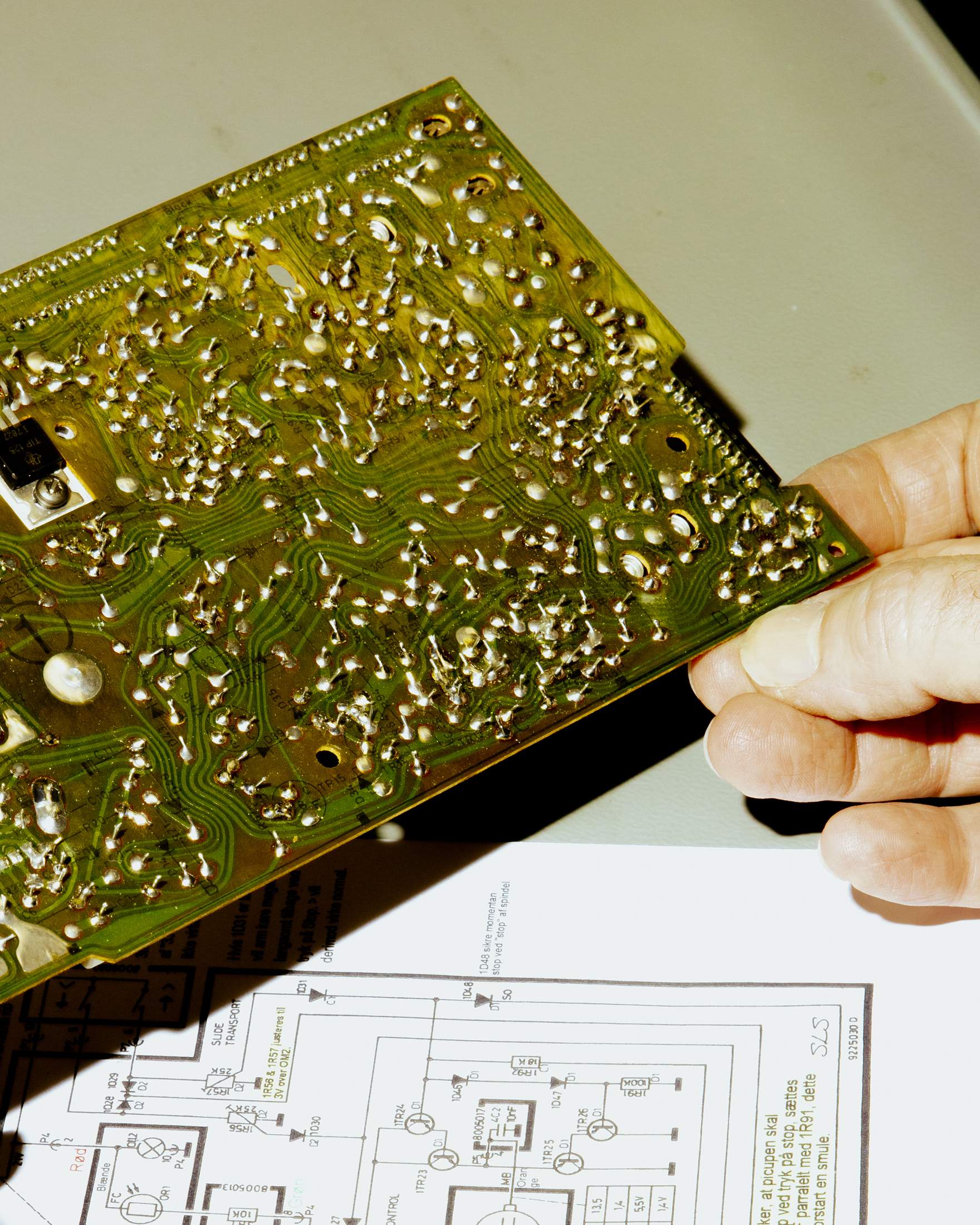
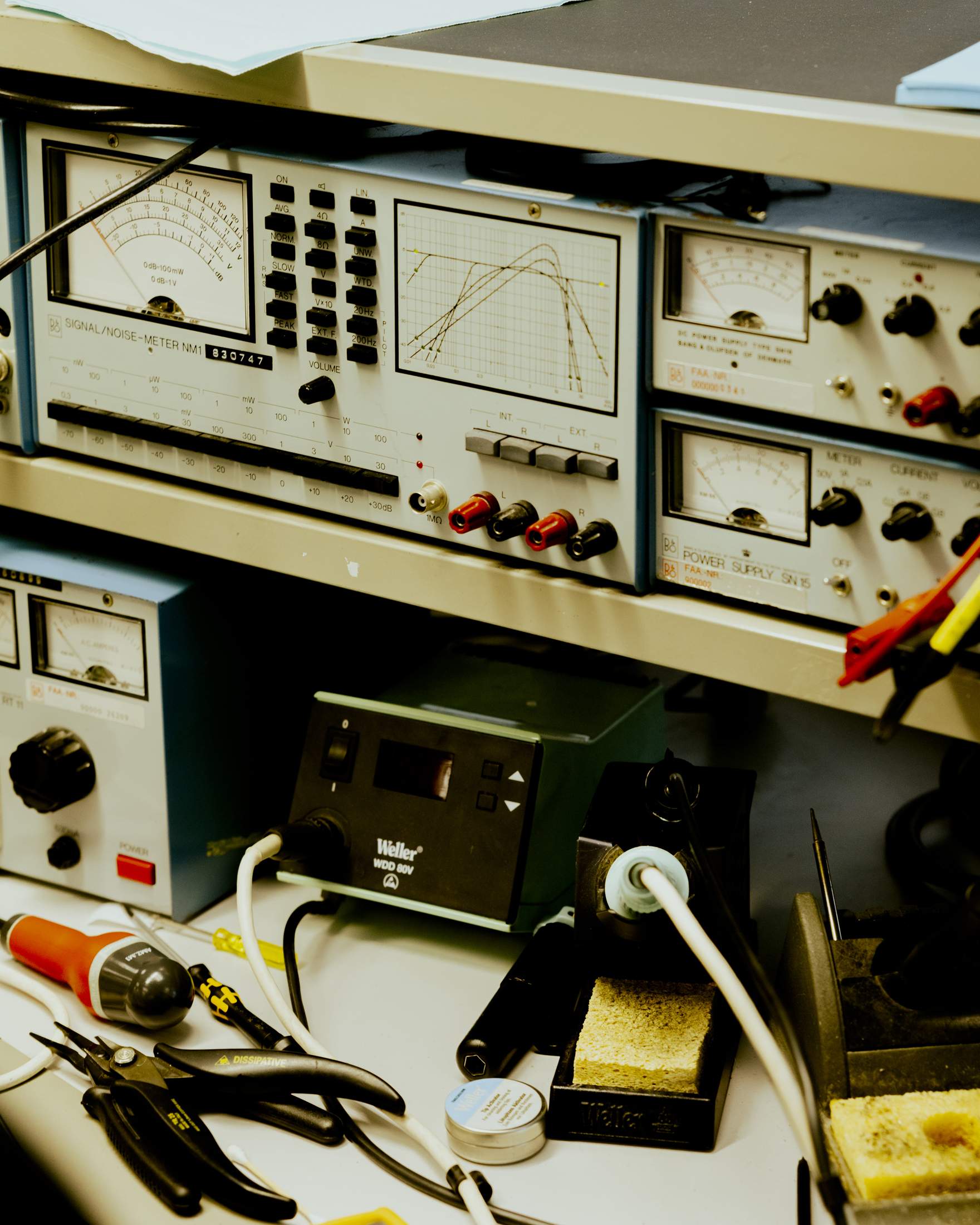
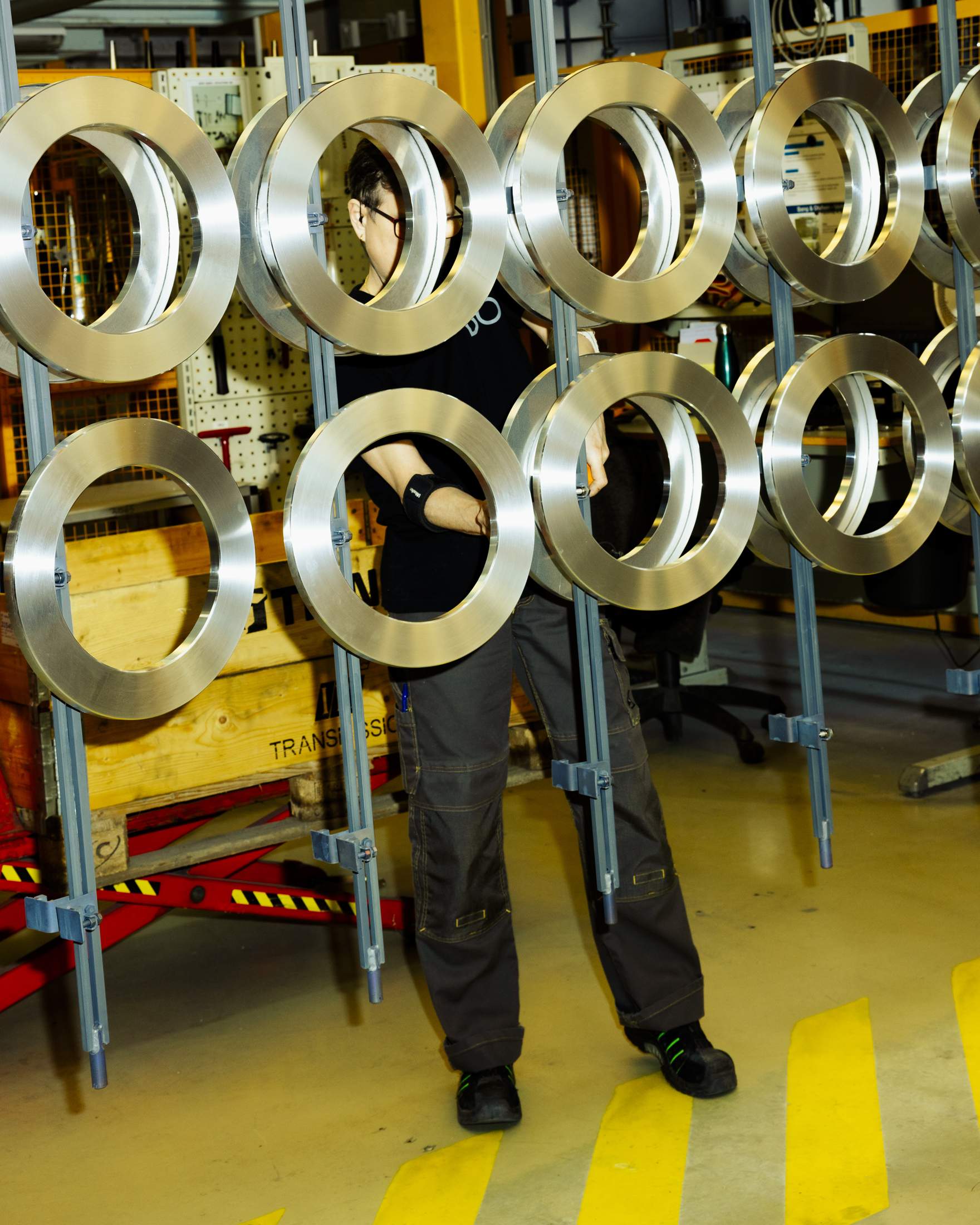

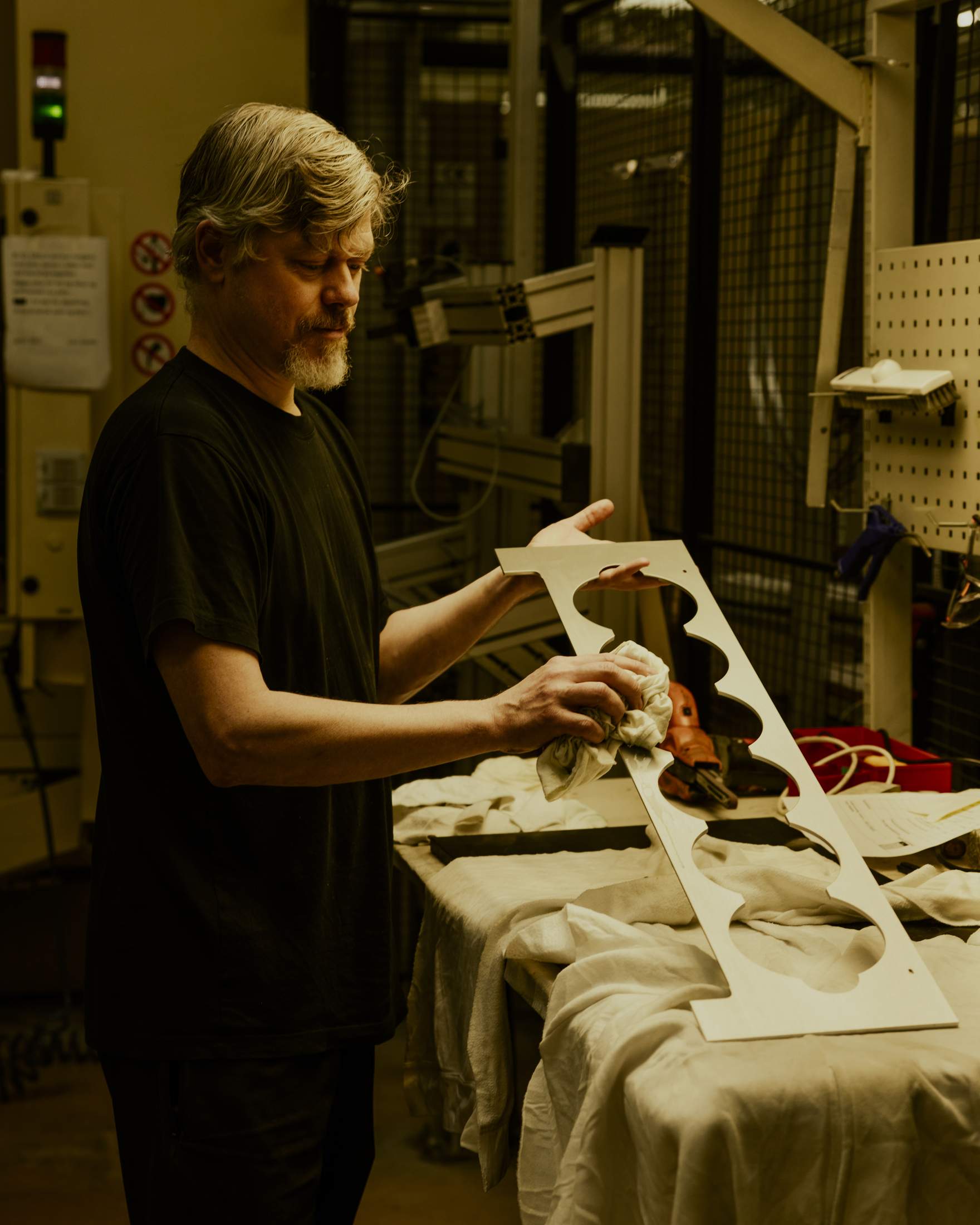
Tiina Karjalainen Kierysch, Bang & Olufsen’s head of design, joins monocle for this section of the tour. Despite being based in Copenhagen, Karjalainen Kierysch makes the four-hour train journey to Struer to visit the factories frequently. “It’s nice to be more hands-on because many of the prototypes are perfected here, in dialogue with the factory. Sometimes even a small detail, such as a polished edge, can enhance an object’s desirability,” she says, leading us through the labyrinthine layout and greeting technicians. “From a design point of view, Bang & Olufsen has always been designing the future, challenging the status quo. Before the Beosound 9000, no one thought that a CD player could look like anything but a black box.”
As we leave the busy factory floor, it’s time to see the refurbished Beosound 9000c in action. The CD player is placed on a matching black aluminium footstand, in tandem with a pair of Beolab 28 speakers from the 2020s that can be wirelessly paired to the CD player. Through refurbishment and the addition of a Beoconnect Encore converter box, 21st-century advances can be introduced to a design from the 1990s, a compelling manipulation of time and the linear progress of technological knowledge. “All of us on the design team were reluctant to change it too much because we liked the brutalism of the simple lines. There’s everything you need and nothing you don’t,” says Karjalainen Kierysch. “So for this recreated version, we kept the integrity of the lines and the materials but we inverted the colours by reanodising the aluminium parts in black.”
As the Beosound 9000c stands proud, its Lewis design looks as futuristic and slick as ever, with its six CDs on display to offer a glimpse of its owner’s musical taste, be it 1950s Ethiopian jazz or 1990s grunge. As a design, it’s a sculptural piece capable of commanding attention in any space. As a piece of technology, it provides an opportunity to dig out old CDs and engage in a more ritualistic approach to listening to music once more.
“We’re hoping to show that a second life is not a compromise but actually that it is sometimes a more attractive option,” says Kogsgaard Hansen. “We’re trying to demonstrate a different way of thinking about electronics.” This might be more difficult to argue in favour of when it comes to old, broken wired headphones with dated aesthetics but it is certainly an interesting proposition regarding a well-crafted collector’s item from the 1990s. Perhaps, then, the only cure to obsolescence is simple design that transcends time.
Ready for a revival?
Here three more Bang & Olufsen designs that we would love to see come out of the archive:
1. The Bauhaus-inspired Hyperbo 5 RG Steel from 1934 is a compelling early example of sound- as-furniture design.
2. The 1959 Beovision Capri TV is a television set on teak wood legs inspired by the Danish modern design movement.
3. Designed in 1998 by Henrik Sørig Thomsen, the Beocom 6000 telephone makes a stylish case for having a landline.


